Through the various workshops that I participated in I feel that I have gained more knowledge and skills to communicate ideas in various forms.
The first workshop I did was the Architectural Drawing workshop. The in-class activities were quick and easy tasks which encouraged us to allocate time logically and efficiently, not dwelling on minor tasks excessively. With the major presentation drawings I came to understand the difference between construction drawings and presentation drawings which presented a bit of confusion even till the end. The final challenge of the task was to learn how to personalise common drawings and images which I find is very opinionated in the successfulness of the approaches.
In Fluid Thoughts to Actions I found this workshop more enjoyable and fun which I think was a side from the more visual art nature of it was because of the collaborative tasks. Working in groups allowed for the flow of ideas and different ways of thinking and approaches to working together. The workshop focused on understanding the way light effected form and the ever presence of change and so I feel that I understand and appreciate more of what light and shadows do and can act as in drawings.
Lastly was Material Modelling. I find that this workshop really plays more practical, architecturally speaking. I think it focused more on problem solving as we looked at different ways to construct different forms such as scoring. Then using these crafting methods to express ideas and concepts. I enjoyed it very much although careful precision in cutting and gluing played on nerves as it became time consuming. Being more of a 'drawing' person as suggested by my first two workshop selections I am quite intrigued by how I seem to feel more a liking to this workshop than to the others. Which I assume is due to the practical and three dimensional aspects and qualities that seem to appeal.
Overall I seem to appreciate more the different ways of communication and its importance not only in architecture but also in many other professions and everyday situations.
Wednesday, October 22, 2008
Tuesday, October 21, 2008
Material Modelling
In-class exercises:
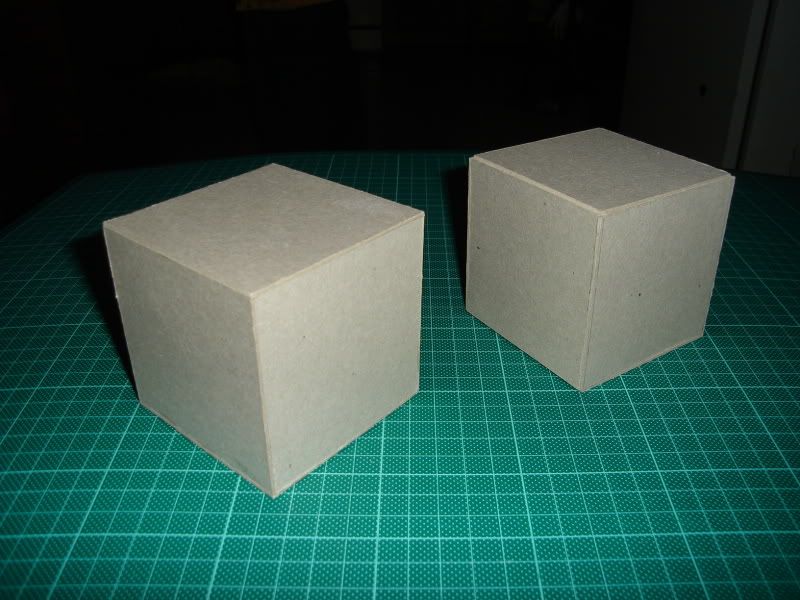
In this exercise we were to build perfect 8 x 8 x 8cm cubes, one by gluing 6 sides together and the second by scoring a net. In order to achieve perfection the thickness of the card had to be carefully considered. Sharp blades and non-excessive gluing was essential.
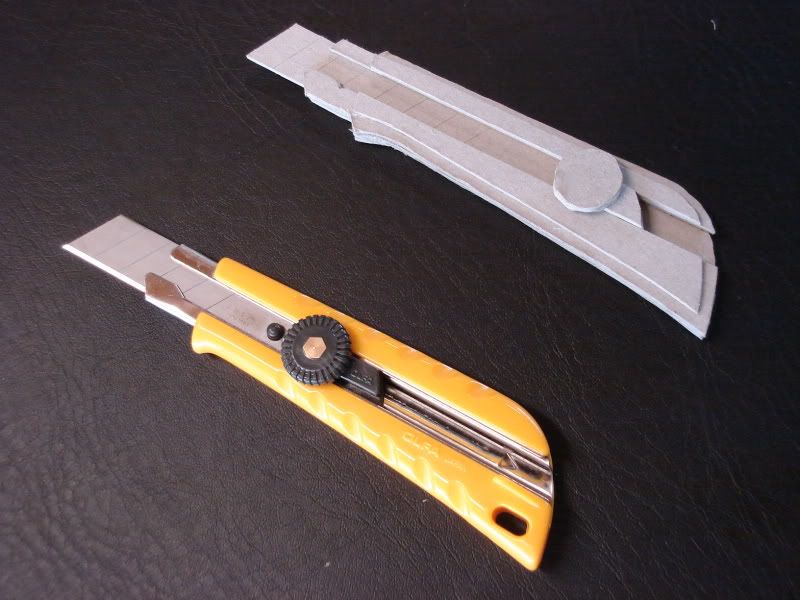
This task adapted the the basic skills gained in producing cubes to constructing more complex objects. Curved surfaces could be achieved through scoring quite easily, however for a curve filled object like this stanely knife my partners and I found it more easier o make through layer the card similar to building contours in models.
1:50 Sectional Model
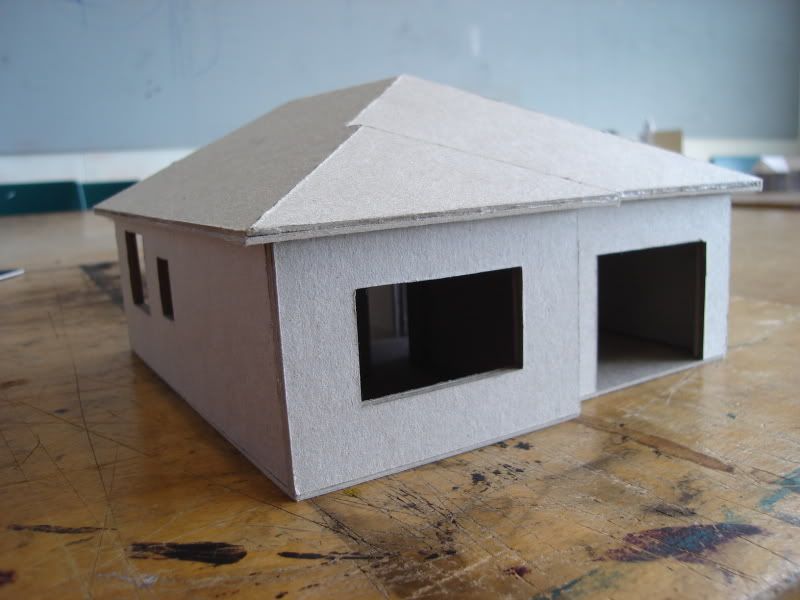

A 1:50 scale model of half of our homes were to be constructed using card. The focus of this task was on scaling particularly acknowledging the different thicknesses of internal walls and external walls.
Transformative Action Model
The two tranformative actions which I performed on this model were: Slicing and Separating, and Attaching. In order to successfully carry out the actions the model had to show very obvious signs of the chosen action.
And so in my attempt in 'slicing and separating' I decided to cut the house into three sections diagonally rather than orthagonally, some what like slicing vegetables. I found that this highlighted the action more and also created interesting geometries from the existing roof.
Because this house is two storeys, 'slicing and separating' disconnected accessibility into the spaces of the upper floor. To resolve this problem the second action I choose was 'attaching' allowing me to re-connect the separate sections of the building. To emphasize a new action different materials were used. The structural connection was made using skewers wrapped in copper coloured brass sheets while acetate sheets were used to suggest glass flooring which bridged the separation of the building.
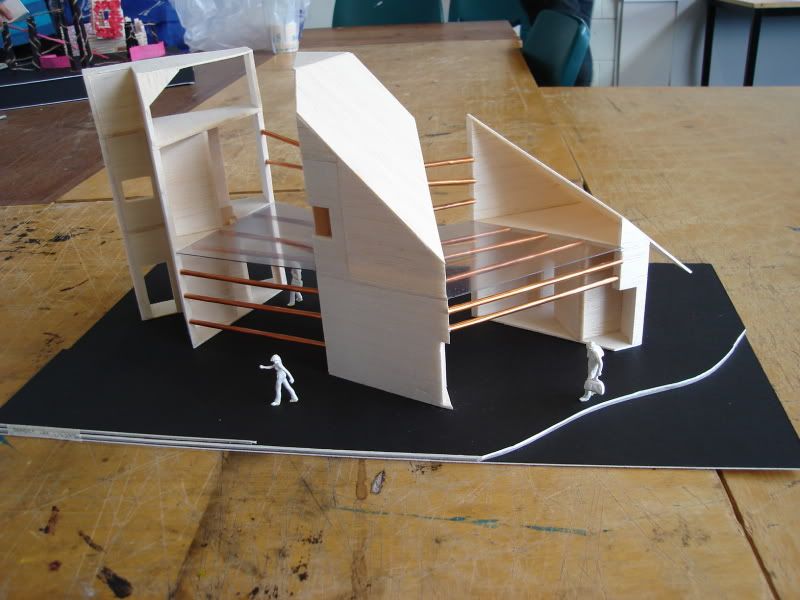
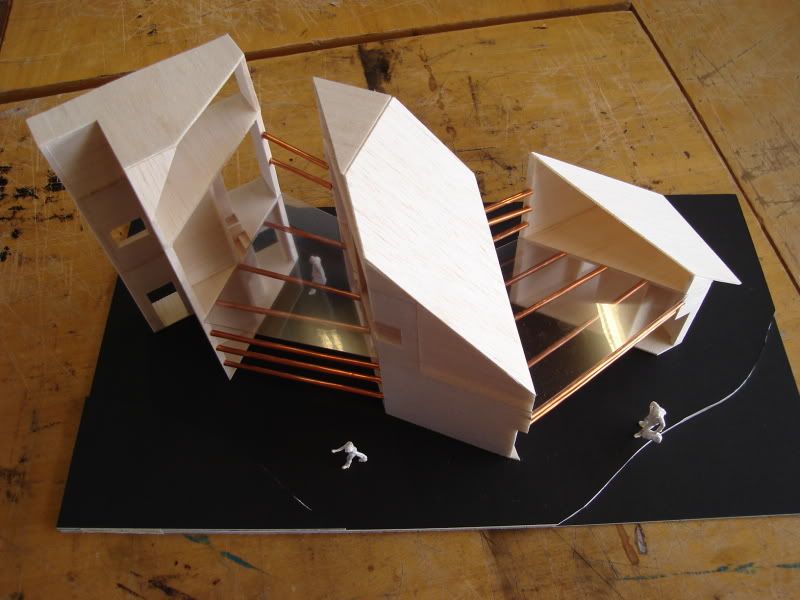

Perfect Cubes

In this exercise we were to build perfect 8 x 8 x 8cm cubes, one by gluing 6 sides together and the second by scoring a net. In order to achieve perfection the thickness of the card had to be carefully considered. Sharp blades and non-excessive gluing was essential.
Replica Object

This task adapted the the basic skills gained in producing cubes to constructing more complex objects. Curved surfaces could be achieved through scoring quite easily, however for a curve filled object like this stanely knife my partners and I found it more easier o make through layer the card similar to building contours in models.
1:50 Sectional Model


A 1:50 scale model of half of our homes were to be constructed using card. The focus of this task was on scaling particularly acknowledging the different thicknesses of internal walls and external walls.
Transformative Action Model
The two tranformative actions which I performed on this model were: Slicing and Separating, and Attaching. In order to successfully carry out the actions the model had to show very obvious signs of the chosen action.
And so in my attempt in 'slicing and separating' I decided to cut the house into three sections diagonally rather than orthagonally, some what like slicing vegetables. I found that this highlighted the action more and also created interesting geometries from the existing roof.
Because this house is two storeys, 'slicing and separating' disconnected accessibility into the spaces of the upper floor. To resolve this problem the second action I choose was 'attaching' allowing me to re-connect the separate sections of the building. To emphasize a new action different materials were used. The structural connection was made using skewers wrapped in copper coloured brass sheets while acetate sheets were used to suggest glass flooring which bridged the separation of the building.



Subscribe to:
Posts (Atom)
